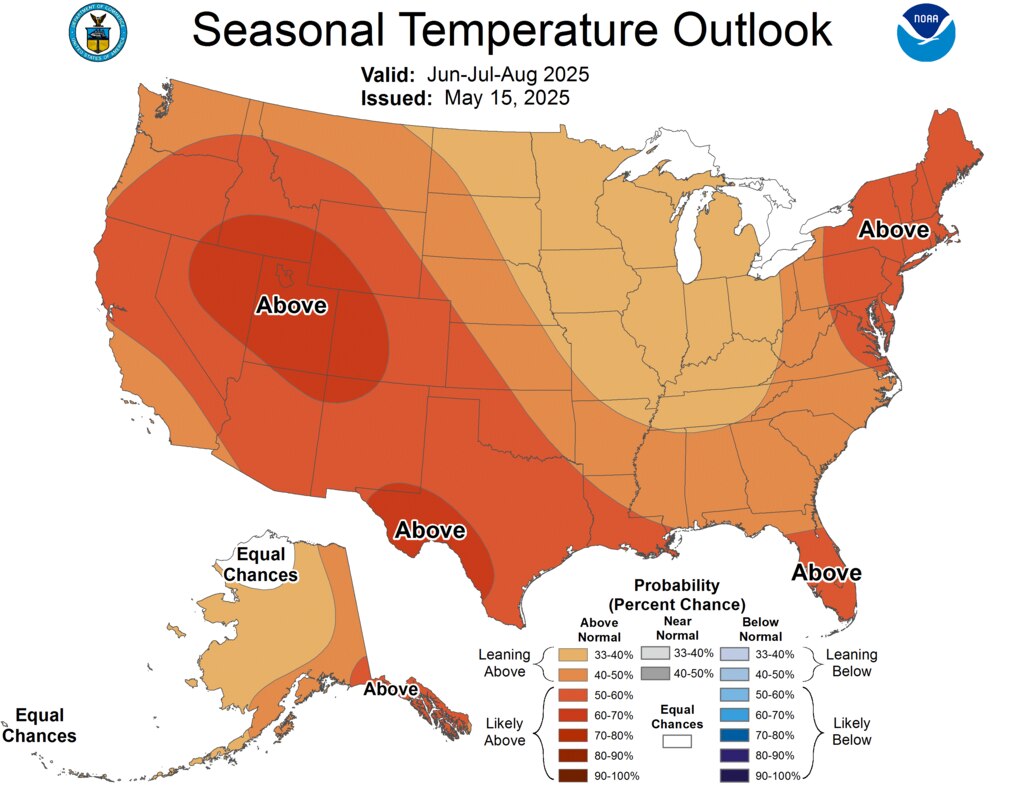It’s been a long-running joke in Baltimore that Artscape weekend, no matter what, includes the hottest days of the year in Maryland.
Well, that certainly won’t be the case for 2025. The festival starts tomorrow, with a forecast high in the mid-60s.
But don’t expect the mild weather to last. Maryland is likely to see summer temperatures that are higher than average, according to the June-July-August outlook published by the National Weather Service Climate Prediction Center.
All of Maryland, except for a sliver of the mountain west, has a 50%-60% chance of seeing hotter-than-average temperatures. The far-western part of the state has a 40%-50% chance.
Most of the state is also forecast to have a 40%-50% chance of seeing more summer precipitation than average, according to the seasonal outlook.

The average summer temperature in the Baltimore region is 76.5 degrees, according to data from the National Centers for Environmental Information. Average precipitation is 14.01 inches.
Read More
This is not a weather forecast, and it doesn’t mean that every single day will be scorching hot or that the state will be bombarded with storms. Daily conditions will vary, but seasonal averages are predicted to be higher than normal.
If you’re starting to think of ways to cool down on hot summer days, you’ll want to plan ahead. Some Maryland state parks will require advanced registration to prevent overcrowding. That includes popular parks with water access, such as Greenbrier State Park and Sandy Point State Park.
Federal officials are also forecasting an above-normal hurricane season. Forecasters with the National Weather Service predict between 13 and 19 named storms this season, with 6-10 of those storms becoming hurricanes and 3-5 becoming major hurricanes, which would mean wind speeds of 111 mph or higher.
“As we witnessed last year with significant inland flooding from hurricanes Helene and Debby, the impacts of hurricanes can reach far beyond coastal communities,” Acting NOAA Administrator Laura Grimm said in a statement. “NOAA is critical for the delivery of early and accurate forecasts and warnings, and provides the scientific expertise needed to save lives and property.”
Extreme heat is dangerous and deadly. At least 25 Marylanders died from hyperthermia last summer, including Ronald Silver II, a sanitation worker who died at work.
Experts predict climate change will continue making Maryland hotter and wetter, increasing the risk of heat-related illness.

Comments
Welcome to The Banner's subscriber-only commenting community. Please review our community guidelines.